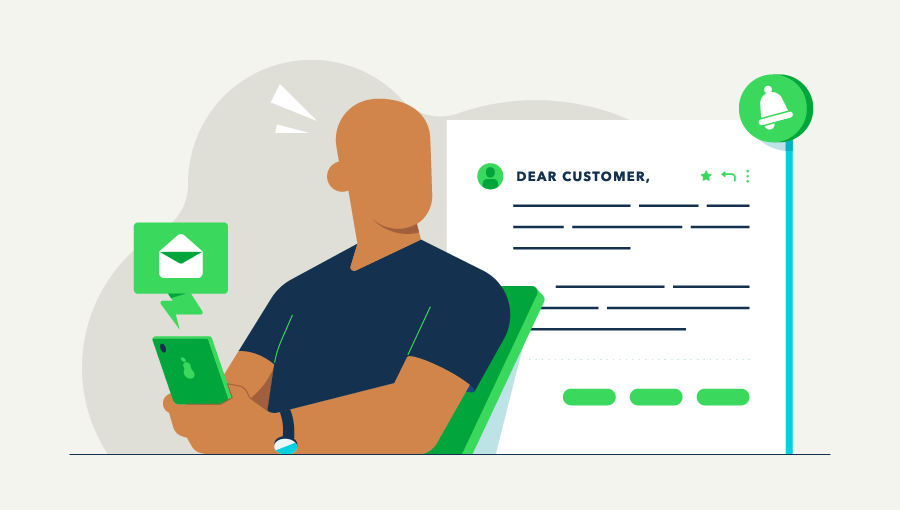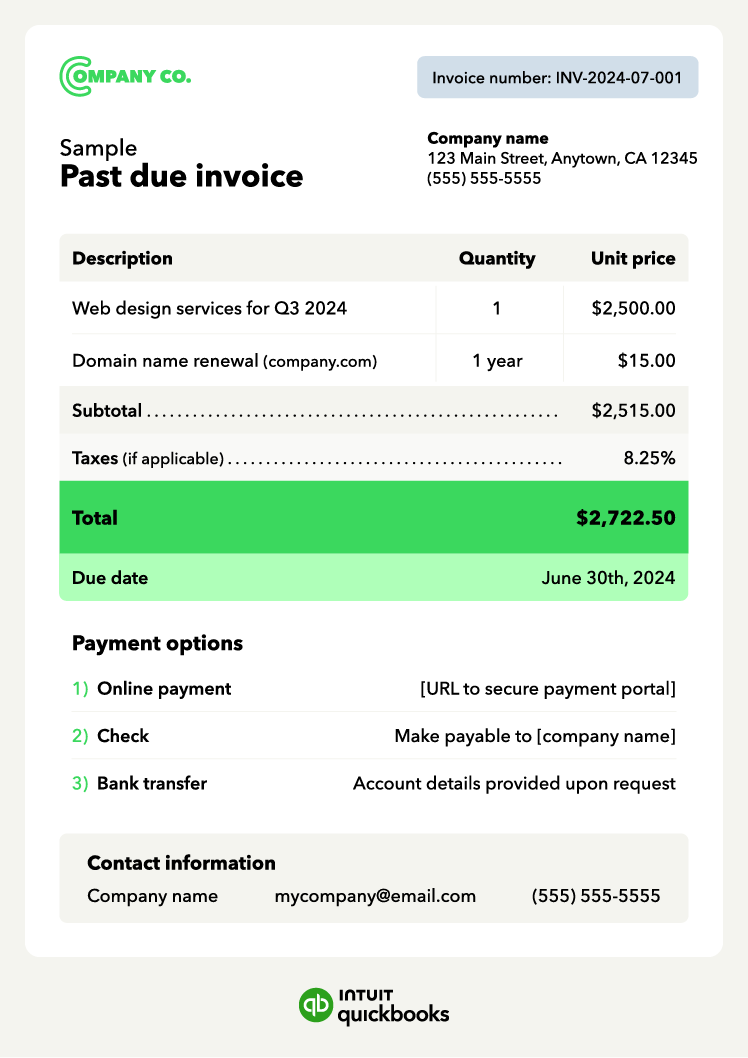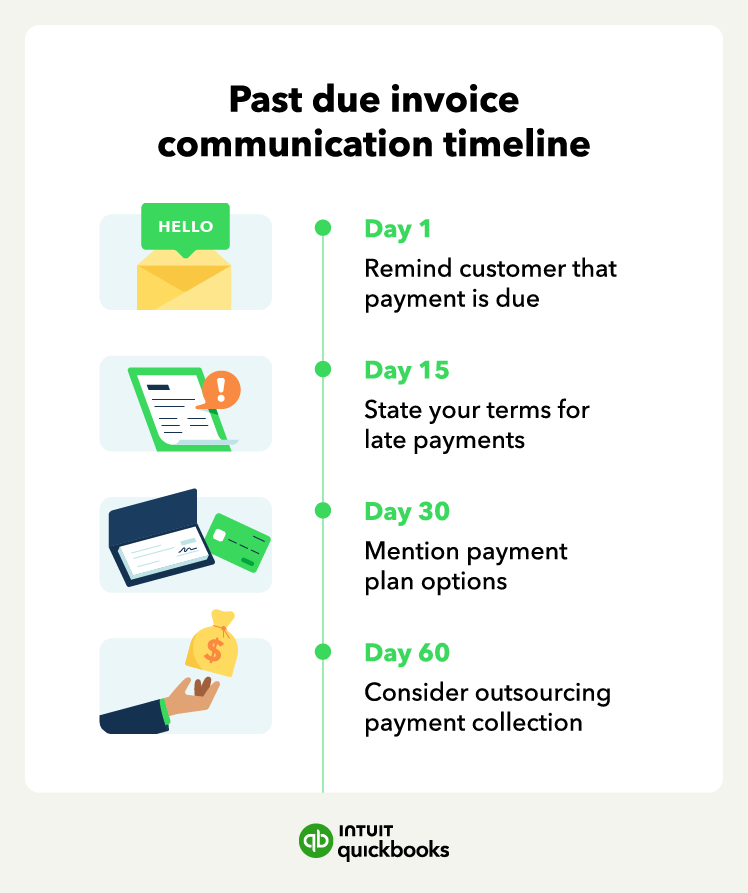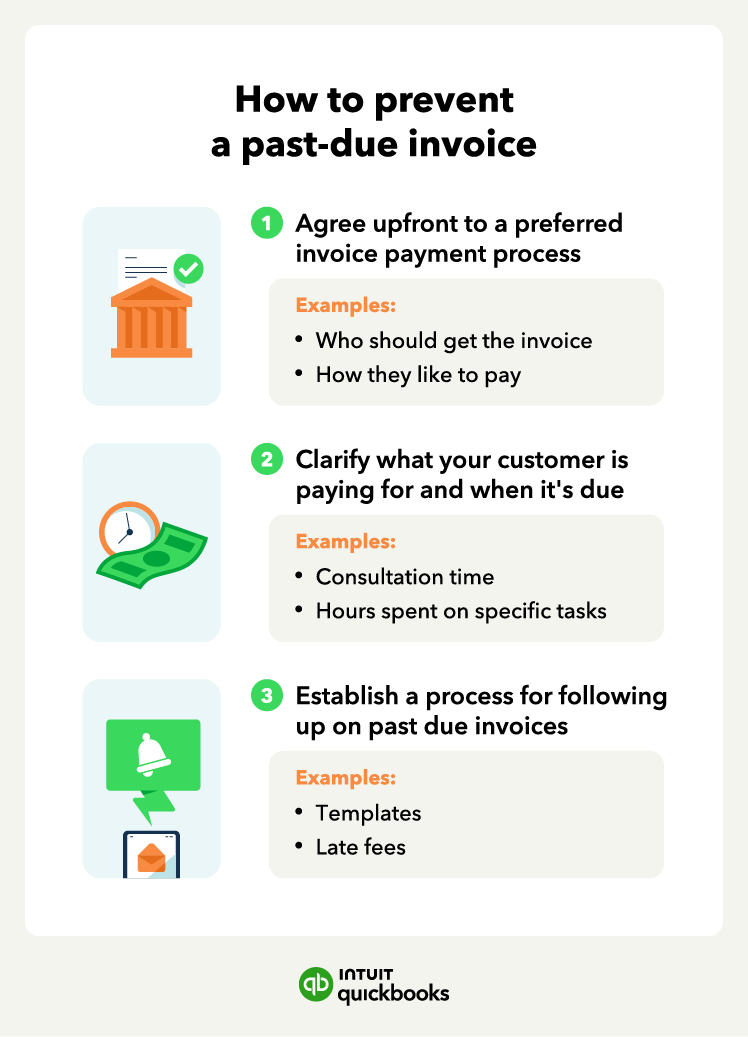Unpaid invoice email escalation
The traditional Net 15, 30, and 60-day overdue invoice reminders may not be conducive to your business plan. These alternative templates offer a flexible structure for crafting overdue invoice emails.
The reminder
For the first contact, send a polite reminder to the individual with a busy schedule. Dispatch this email one week before the payment is due to ensure they have sufficient time to make the payment.
Gentle reminder email template:
Hi [Client Name],
Just a friendly heads-up that your payment for account number [Account Number] is due next week on [New Due Date]. The outstanding balance is [Amount].
We understand that busy schedules can sometimes lead to overlooked deadlines. If you've already submitted payment, please disregard this email. Otherwise, we've made it easy for you to settle the invoice online through this link: [Link to secure payment portal] (if applicable).
The invoice is attached for your reference. Please don't hesitate to reach out if you have any questions about the invoice or need any assistance with the payment process.
Thanks,
[Your Name]
The nudge
This is the first request for action. You are now directly requesting payment. Send this email on the due date and keep it concise.
Nudging reminder email template:
Dear [Client Name],
This is a friendly reminder that your invoice # [Invoice Number] is due today, totaling [amount]. We've attached the invoice for your reference.
Your prompt payment is appreciated. For your convenience, we offer several easy payment options: [list payment options].
Please don't hesitate to contact us if you have any questions about the invoice or encounter any difficulties with the payment process. We're happy to assist you.
Thank you for your business.
Sincerely,
[Your Name]
Official notice
This is the first overdue invoice email, notifying the customer that their account is in default and immediate payment is required. Clearly outline any applicable late fees. Send this email one month after the payment due date.
Official notice email template:
Dear [Client Name],
This is a friendly reminder that your invoice # [Invoice Number] is past due. The total amount due is [amount]. We've attached the invoice for your reference.
We understand that things can sometimes slip through the cracks. If you've already submitted payment, please disregard this email.
To help us keep our records current, we encourage you to settle this invoice as soon as possible.
Should you have any questions or require assistance with the payment process, please don't hesitate to reach out. We're happy to help!
Thank you for your business.
Sincerely,
[Your Name]
Maintain a clear record of all communication regarding the invoice, including dates, emails, and phone calls.
The direct ask
At this stage, the tone needs to be more pressing. Inform the customer that late fees have been added and mention the possibility of their account being sent to collections to ensure they take notice. Dispatch this email two months after the payment due date.
Direct notice email template:
Dear [Client Name],
This email is to bring your immediate attention to invoice # [Invoice Number], which remains outstanding. The original due date was [original due date], making it significantly past due. The outstanding balance is [amount due], and a late fee of [late fee amount] has been applied, bringing the total due to [total amount due].
We understand unexpected situations can happen. However, to maintain a healthy business relationship, prompt payment is crucial.
Unfortunately, if this invoice remains unsettled within the next [number] business days, we will be forced to take further action. This may involve involving a collection agency, which could negatively affect your credit score and potentially incur additional fees.
To prevent these consequences, we strongly encourage you to prioritize settling this invoice immediately. The updated invoice with payment options is attached for your convenience: [list payment options].
If you've already submitted payment, please disregard this email and accept our apologies.
Sincerely,
[Your Name]
The final notice
At this stage, you may need to involve a collections agency to recover the amount owed. All late fees will be applied, the account will be closed, and the customer relationship will be terminated. Send this email three months after the payment due date.
Final notice email template:
Dear [Client Name],
This serves as your final notice regarding outstanding invoice # [Invoice Number] for [amount due]. This includes late fees totaling [late fee amount]. A final copy of the invoice is attached for your reference.
Unless payment is received in full within the next seven (7) business days, we will be forced to take further action. This may include:
- Closure of your account
- Referral to a collections agency, which could negatively impact your credit score and incur additional fees.
To avoid these consequences, we urge you to prioritize settling this invoice immediately. We offer several convenient payment options: [list payment options].
If you have already submitted payment, please disregard this email and accept our apologies for any inconvenience. Should you require assistance or have any questions about the invoice, please don't hesitate to contact us.
Sincerely,
[Your Name]













 Most invoice factoring agreements are “recourse,” meaning that if your client doesn’t pay, you’re still responsible for covering the amount. Try using a professional and courteous approach to resolve the issue promptly.
Most invoice factoring agreements are “recourse,” meaning that if your client doesn’t pay, you’re still responsible for covering the amount. Try using a professional and courteous approach to resolve the issue promptly.







